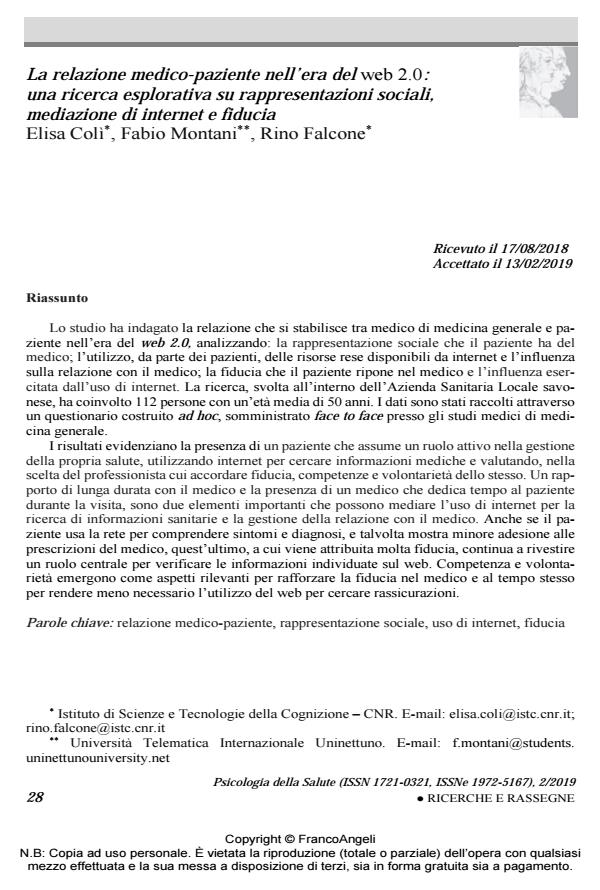The doctor-patient relationship in the Web 2.0 era: an exploratory research on social repre-sentations, Internet mediation and trust
Journal title PSICOLOGIA DELLA SALUTE
Author/s Elisa Colì, Fabio Montani, Rino Falcone
Publishing Year 2019 Issue 2019/2
Language Italian Pages 25 P. 28-52 File size 293 KB
DOI 10.3280/PDS2019-002002
DOI is like a bar code for intellectual property: to have more infomation
click here
Below, you can see the article first page
If you want to buy this article in PDF format, you can do it, following the instructions to buy download credits

FrancoAngeli is member of Publishers International Linking Association, Inc (PILA), a not-for-profit association which run the CrossRef service enabling links to and from online scholarly content.
The study investigated the relationship between general practitioner and patient in the Web 2.0 era, analyzing the social representation that the patient has of the doctor, the use by patients of the resources made avalaible by Internet and the influence on the relationship with their doc-tor, the patient’s trust in the doctor and the influence of the internet use. The research, carried out within the Local Health Authority of Savona, involved 112 people with an average age of 50 years. The data were collected through an ad hoc questionnaire, completed at the doctors’ offices. The results highlight the presence of a patient who takes an active role in the management of his health, using internet to look for health information, and evaluating skills and willing-ness of the doctor of which he chose to trust. A long-lasting relationship with the doctor and the presence of a doctor who devotes time to the patient during the visit are two important ele-ments that can mediate the use of the internet for the search of health information and for the management of the relationship with the doctor. Even if the patient uses the web to understand his symptoms and physician’s diagnosis, and sometimes is less compliant with the doctor’s prescriptions, the doctor, who is given a lot of trust, continues to play a central role in verify-ing the information found on the internet. The competence and the willingness resulted as im-portant elements to strengthen trust in the doctor and to make less necessary the use of the web to look for reassurance.
Keywords: Doctor-patient relationship, social representation, internet use, trust
Elisa Colì, Fabio Montani, Rino Falcone, La relazione medico-paziente nell’era del web 2.0: una ricerca esplorativa su rappresentazioni sociali, mediazione di internet e fiducia in "PSICOLOGIA DELLA SALUTE" 2/2019, pp 28-52, DOI: 10.3280/PDS2019-002002